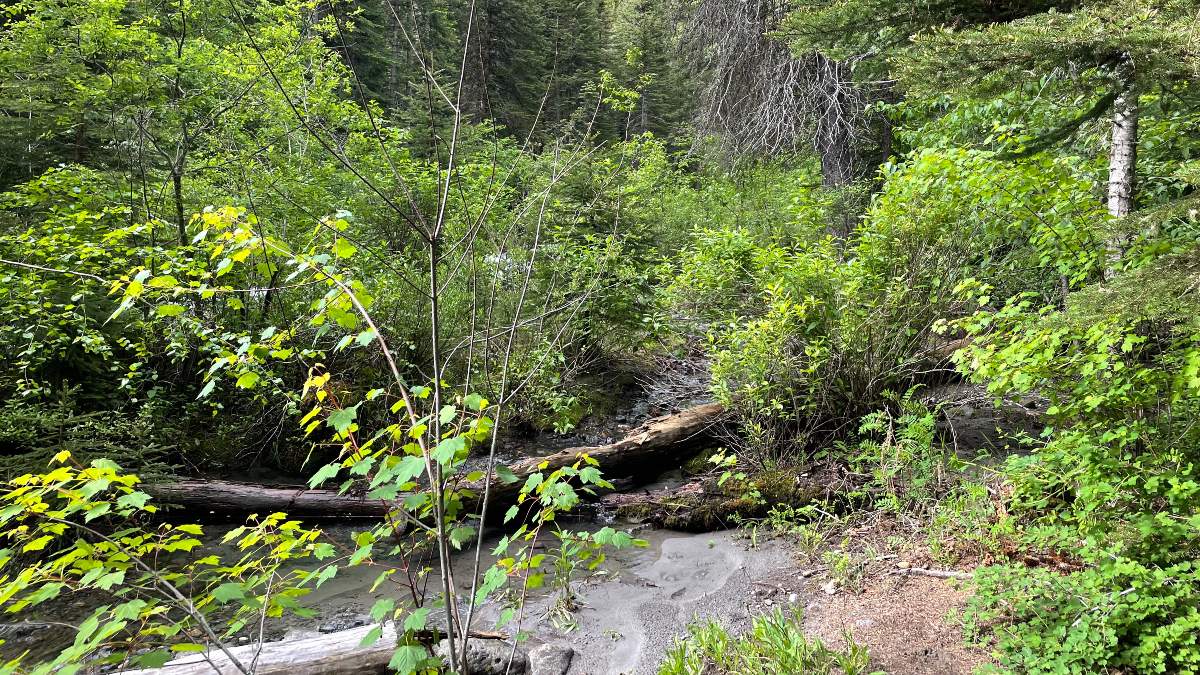A Better Approach to Determining Stream Permanence
August 02, 2023
Although small and often overlooked, headwater streams are critically important to ecosystem health. Headwater streams typically represent around 80% of the stream network watershed, and if a river network is thought to be the circulatory system of the landscape, headwater streams are analogous to small capillaries that fan into the larger veins and arteries.
Many headwater streams begin as small wetlands, beaver impoundments, or cascading mountain streams, and their characteristics vary according to the topography and geology of the surrounding landscape. Headwater streams are often classified by their flow regime, and are considered ephemeral, intermittent or perennial. Ephemeral streams are those that have flowing water only after major rain events or for very short times during the year, while intermittent streams flow only during the wetter periods of the year and perennial streams contain water year-round.
“Whether a stream flows continuously is critical not only to the organisms of that stream, but also determines whether a stream receives regulatory protection under the Clean Water Act,” says Paul Gessler, Professor of Remote Sensing and Geospatial Ecology in the University of Idaho’s Department of Forest, Rangeland and Fire Sciences. Unfortunately, many of the determinations and representations of stream permanence, such as “blue lines” on U. S. Geological Survey (USGS) topographic maps, are outdated or inaccurate. And while these errors may not seem like a big deal, they are important for resource managers and agencies that need accurate spatial data and digital representations of stream networks to ensure proper management and protection. For example, the National Hydrography Dataset developed by USGS in 2019 and often considered the most comprehensive dataset describing streamflow permanence in the U.S., may exhibit error rates up to 50% on whether a headwater stream is classified as either permanent (perennial) versus nonpermanent (intermittent or ephemeral).
A recent study published in the Journal of Hydrology by a team of researchers from the University of Idaho and U.S. Geological Survey, set out to explore a better approach to modeling and predicting flow permanence. Gessler, Ph.D. student Konrad Hafen, and the USGS utilized the Water Erosion Prediction Project (WEPP) to model streamflow permanence. WEPP is a physically-based soil erosion prediction software developed by USDA-ARS National Soil Erosion Research Lab, in collaboration with numerous agencies and universities including the USFS Rocky Mountain Research Station in Moscow, ID. Of particular importance to the current study, WEPP is a distributed parameter, continuous simulation model that integrates hydrology, plant science, hydraulics and erosion mechanics to predict erosion at the hillslope and watershed scale, allowing for the accurate prediction of flow permanence.
The research team applied the WEPP model to two study watersheds in the Pacific Northwest representing different ends a climatic gradient: H. J. Andrews Experimental Forest representing a humid climate and the Willow and Whitehorse creeks representing an arid climate. Using WEPP and calibrating with extensive and long-term stream monitoring data, the researchers simulated annual streamflow permanence. When calibrated to observed streamflow, WEPP correctly classified annual streamflow permanence for 83% of stream reaches at H.J. Andrews and up to 87% at Willow and Whitehorse Creeks. The research team also examined daily streamflow permanence at Willow and Whitehorse Creeks, finding that the WEPP simulations correctly classified 63-93% of daily streamflow permanence observations in this arid watershed.
“This U of I and USGS collaboration is testing and developing methods for more accurate and dynamic modeling of stream flow permanence,” says Gessler. Initial results suggest that evaluating physically based streamflow permanence models should be conducted on both permanent and nonpermanent streams at daily and annual time scales to ensure evaluation metrics are appropriate for interpretation purposes. Additionally, the team found that the best WEPP daily parameterizations did not result in the best WEPP annual accuracies. This is important as regulatory decisions are based on an annual classification of streamflow permanence.
“The biggest challenge,” says Gessler, “is the paucity of continuous stream monitoring data for testing and validation in different physiographic settings. However, this work provides a foundation for more accurate mapping of stream permanence.”
—
Article by Charles Goebel, Department of Forest, Rangeland and Fire Sciences
Published June 2023.

About the University of Idaho
The University of Idaho, home of the Vandals, is Idaho’s land-grant, national research university. From its residential campus in Moscow, U of I serves the state of Idaho through educational centers in Boise, Coeur d’Alene and Idaho Falls, nine research and Extension centers, plus Extension offices in 42 counties. Home to more than 12,000 students statewide, U of I is a leader in student-centered learning and excels at interdisciplinary research, service to businesses and communities, and in advancing diversity, citizenship and global outreach. U of I competes in the Big Sky and Western Athletic conferences. Learn more at uidaho.edu.






